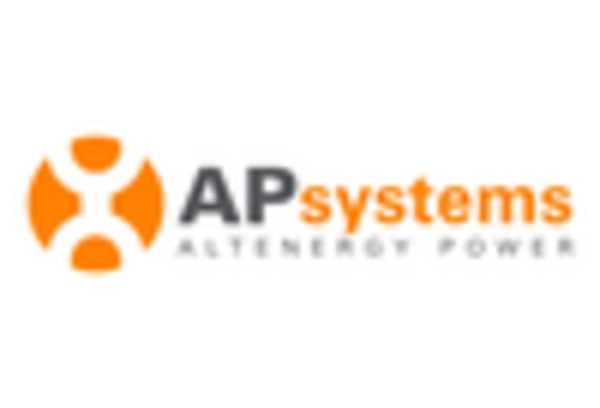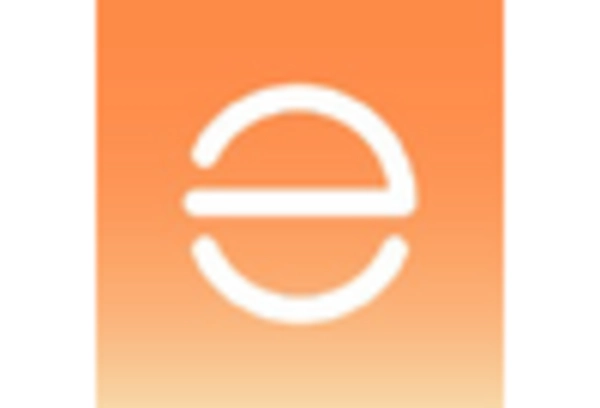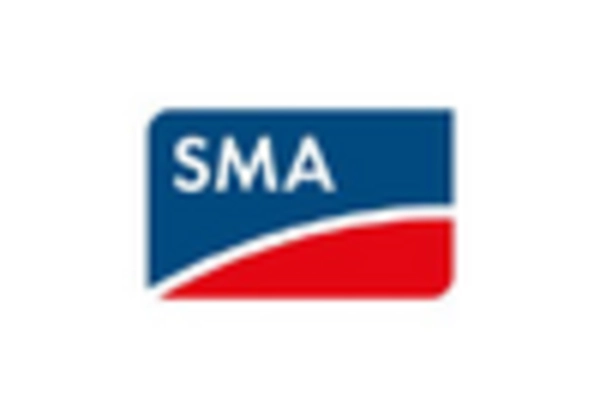Government Incentives and Policies
Government incentives and supportive policies are playing a pivotal role in shaping the Standalone Micro Inverter Market. Many countries are implementing tax credits, rebates, and grants to encourage the adoption of solar energy systems. These financial incentives lower the initial investment barrier for consumers, making micro inverters a more attractive option. For example, in 2025, several regions are expected to offer incentives that could cover up to 30% of the installation costs for solar systems, including micro inverters. Such policies not only stimulate market growth but also promote the transition towards renewable energy, thereby enhancing the overall appeal of the Standalone Micro Inverter Market.
Rising Demand for Renewable Energy
The Standalone Micro Inverter Market is experiencing a notable surge in demand for renewable energy solutions. This trend is largely driven by increasing awareness of climate change and the need for sustainable energy sources. As governments and organizations implement policies to reduce carbon emissions, the adoption of solar energy systems, including micro inverters, is likely to rise. In 2025, the market for solar energy is projected to reach approximately 200 billion USD, with micro inverters playing a crucial role in enhancing energy efficiency. This growing demand for renewable energy solutions is expected to propel the Standalone Micro Inverter Market forward, as consumers seek efficient and reliable energy generation methods.
Increased Focus on Energy Efficiency
The Standalone Micro Inverter Market is witnessing a heightened focus on energy efficiency among consumers and businesses alike. As energy costs continue to rise, there is a growing emphasis on technologies that maximize energy output and minimize waste. Micro inverters, known for their ability to optimize the performance of individual solar panels, are becoming increasingly popular as a solution to enhance energy efficiency. In 2025, the market is expected to see a shift towards products that not only provide energy generation but also contribute to overall energy savings. This trend is likely to drive innovation and competition within the Standalone Micro Inverter Market, as manufacturers strive to meet the evolving demands of energy-conscious consumers.
Growing Residential Solar Installations
The increasing trend of residential solar installations is significantly impacting the Standalone Micro Inverter Market. Homeowners are increasingly opting for solar energy solutions to reduce electricity bills and enhance energy independence. In 2025, it is estimated that residential solar installations will account for over 60% of the total solar market, with micro inverters being a preferred choice due to their ability to optimize energy production at the panel level. This shift towards residential solar systems is likely to drive demand for micro inverters, as they offer flexibility and scalability, making them ideal for various household sizes and energy needs. Consequently, the Standalone Micro Inverter Market is poised for substantial growth.
Technological Innovations in Micro Inverters
Technological advancements are significantly influencing the Standalone Micro Inverter Market. Innovations such as improved efficiency rates, enhanced grid compatibility, and advanced monitoring capabilities are making micro inverters more appealing to consumers. For instance, the latest models can achieve efficiency rates exceeding 95%, which is a compelling factor for potential buyers. Furthermore, the integration of smart technology allows for real-time monitoring and performance optimization, which enhances user experience. As these technologies continue to evolve, they are likely to attract more investments and drive growth within the Standalone Micro Inverter Market, potentially leading to a market valuation of over 10 billion USD by 2026.


















Leave a Comment